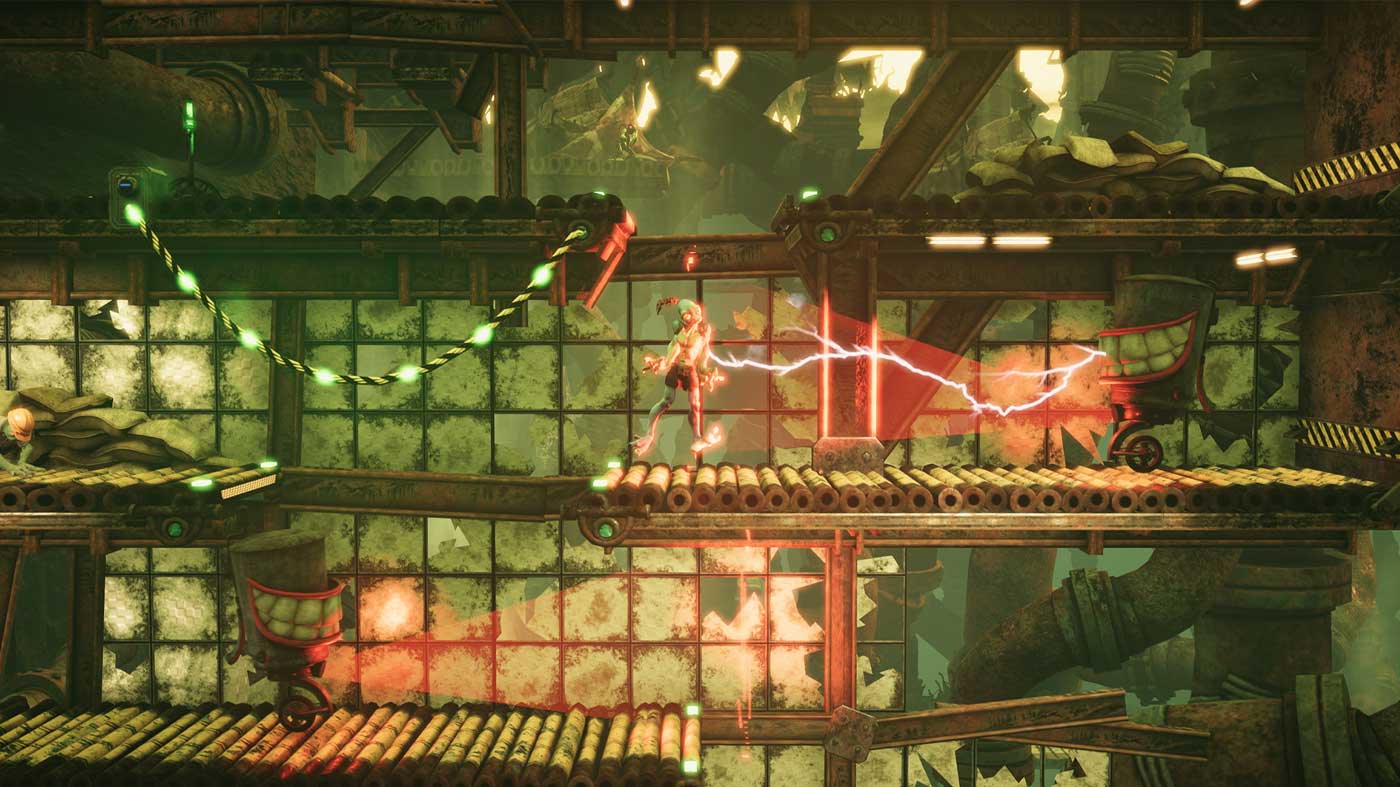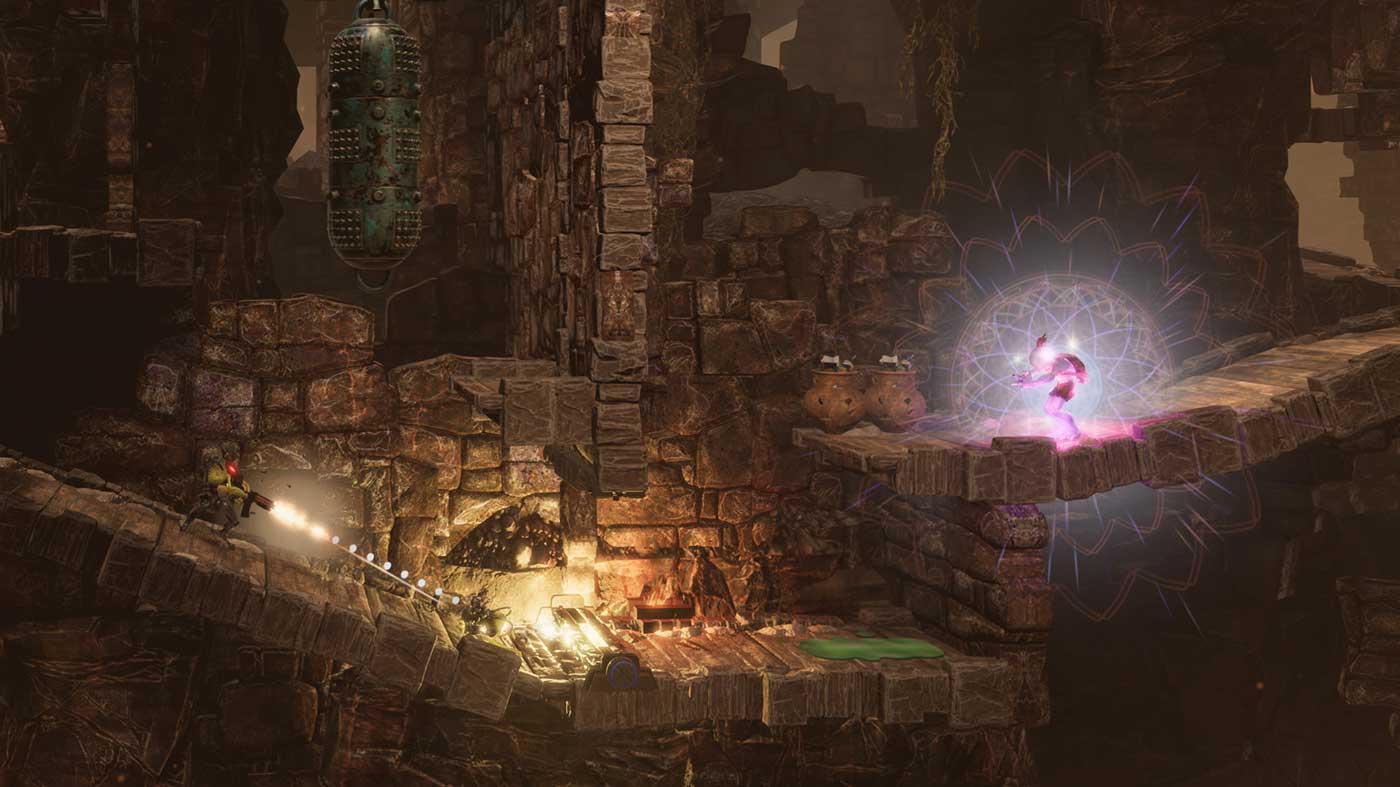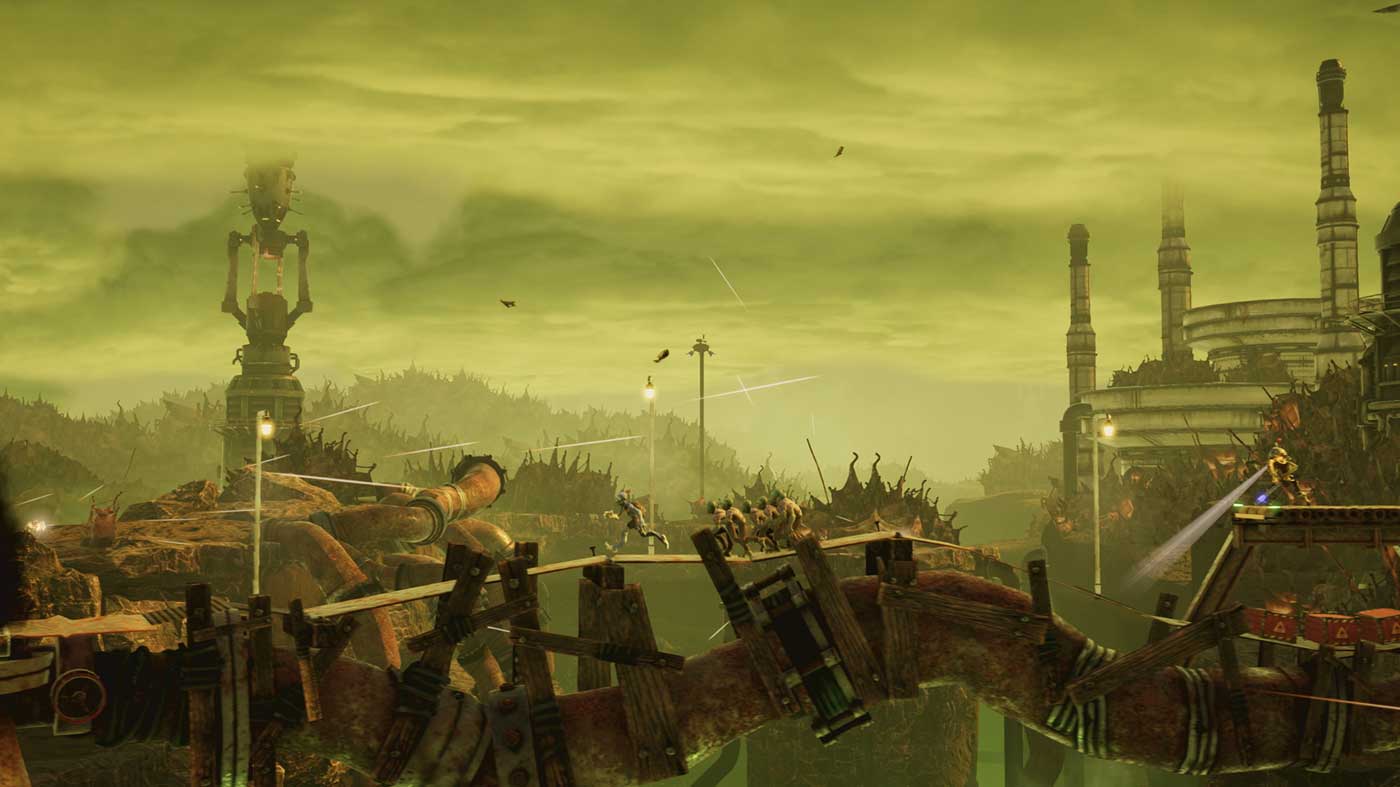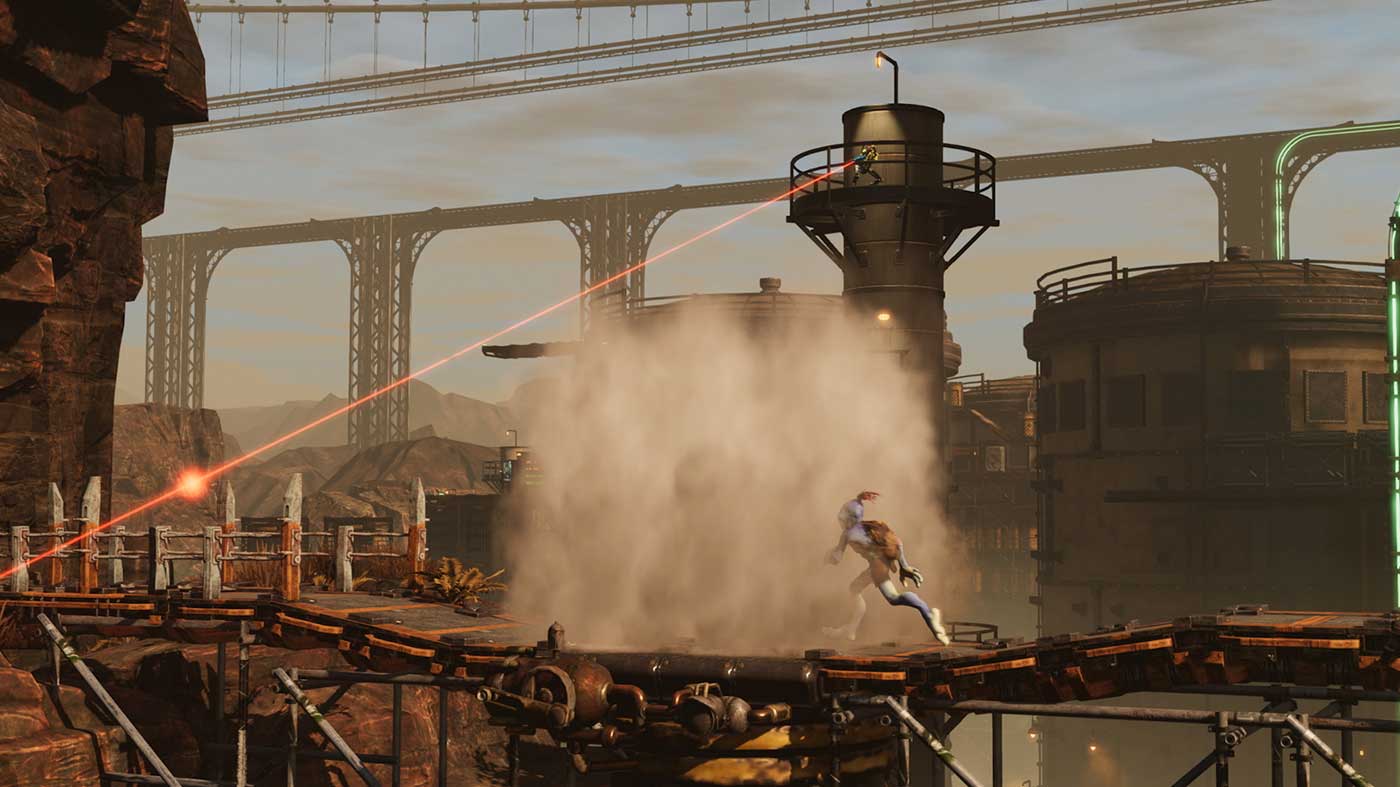The Oddworld franchise is one that holds a lot of nostalgic value for a lot of people, especially when it comes to its first two titles – Abe’s Oddysee and Abe’s Exoddus – on the original PlayStation as well as PC. Some might be surprised to learn though that Exoddus, arguably the better of the two, was considered a spin-off and not part of the planned Oddworld ‘Quintology’ at that time by creator Lorne Lanning and Oddworld Inhabitants. That long-term dream was sadly never realised, but with the release of 2014’s remake of Abe’s Oddysee, titled New ‘n’ Tasty, the Quintology is being given a fresh start and another chance. Funnily enough, the next of those five games manages to bring Exoddus back into the fold, with a complete reimagining of Abe’s second adventure in the form of Oddworld: Soulstorm.
While it loosely follows the blueprint set out by the original Exoddus, this second chapter in the new Oddworld Quintology takes the narrative on some distinctly new and different turns and delivers a decidedly more modern interpretation. Like before, the story sees Abe and his 300-odd fellow Mudokons slaves living out their lives after escaping (and destroying) Rupture Farms in the first game, before accidentally uncovering another sinister plot that threatens both the thousands of remaining enslaved Mudokons as well as Abe and his newly-freed companions. Soulstorm ditches a lot of the mysticism that moved the plot along in Exoddus, but replaces it with a smarter and more consistent narrative that keeps with the spirit of the series’ dark humour and satire of consumerism and capitalism.

The one thing that brings the best out of this retelling is the sheer quality of its presentation, with beautifully-rendered and animated cutscenes that do a fantastic job of portraying the already-beloved Oddworld characters. Abe and his friends, as well as the Glukkons and Sligs, are equal parts endearing and repulsive in a way that is quintessential to the franchise. Abe’s sad little eyes get me every time, and the game takes him to some visually-interesting (if overly industrial) places. Voice acting is pretty good across the board as well, with a few neat industry cameos in the mix to boot, although the audio mix itself both in and out of cutscenes could definitely use some work.
Anyone who’s played Abe’s original adventures or New ‘n’ Tasty will be instantly familiar with Soulstorm’s overall gameplay concept. A mix of platforming, stealth and puzzles on (as the studio describes it) a 2.9D plane, it’s unmistakable as a new take on Exoddus, but Oddworld Inhabitants has sought to inject the established formula with a slate of new RPG-lite elements. As before, each level is a mostly-linear run that sees Abe climb obstacles, dodge traps and sneak around enemies while attempting to rescue his fellow Mudokons.

At its core, it’s still some of the best puzzle platforming in the business, adding extra strategic layers with Abe needing to manage the safety of his Lemmings-like followers and make clever use of his ability to possess the Slig grunts trying to thwart his escape. It’s a little jarring as a fan of the original to see that Gamespeak has been slimmed down to just a couple of commands but it keeps things simple and intuitive, and contextual modifiers make it easy to manage groups and keep them in stealth. Still, it sucks I can’t fart and growl at my friends on command anymore.
Adding to the gameplay fans know from the last game, Soulstorm introduces a host of new items and gadgets to Abe’s arsenal, as well as a crafting system with which to produce them. I was intrigued to know how crafting might pay off in a game built from closed, linear levels, and the answer is an expected ‘just okay’. The game typically only gives you enough resources to make what you need for the challenge ahead, so it feels superfluous, like someone suggested adding crafting would modernise the game but didn’t consider how, or if, it would enhance the core loop. The items that Abe can craft are quite fun to use though, ranging from smoke bombs to aid stealthy traversal to bouncy candy and sticky soda bombs.
These all feed into the new progression systems that measure the success of Abe’s mission. Like before, saving as many Mudokons as possible (and mitigating unfortunate casualties) is key to seeing the game’s best endings, though it works a little differently this time around. The benchmark for finishing a level with good ‘Quarma’ is rescuing at least 80% of the Mudokons within, the game’s four possible endings (and some extra post-game content) determined then by the percentage of levels finished with good Quarma.

Adding to that are ‘badges’ that work like mini-achievements for fulfilling completion requirements in levels as well as a running tally on the number of Sligs Abe murders along the way. A completely-pacifist playstyle doesn’t seem possible from my experience, thanks to a handful of specific sections, but it’s decent fun to make effective use of Abe’s new toolset to ensure the enemy’s hired guns get to go home to their gross alien families.
The new systems definitely do a lot to encourage replayability, but they’re undermined by a few too many old-school design sensibilities still kicking around. For one, some levels feel way too long. It might sound like an odd thing to complain about, but it’s all too easy to miss things and be forced to replay an entire 40-50 minute level just to get them. That’s because, while the incredible scale and the fact that you’re often able to see far later sections off in the background is super impressive, most levels are entirely linear affairs with little room to backtrack. They’re checkpointed frequently enough, which helps, but the fact that you can’t re-use a checkpoint until you hit the next one also means that you’ll spend a lot of time re-scavenging and re-crafting items should you need to repeat particularly tricky sections.
Which will happen often, given Soulstorm is quite challenging. That’s a series hallmark, and something I welcomed heading into my playthrough. The challenge that comes from the game’s stealth-based puzzles is great, as it always has been, but I was not prepared for the ridiculous number of cheap deaths that I suffered at the hands of the game’s unreliable controls and surprising lack of polish. Abe’s new double-jump is a blessing, making platforming both more manageable and more fun, but his ability to grab ledges and monkey bars at the end of those jumps is spotty at best. The use of a single contextual button to interact with multiple objects, many of which are placed right next to each other, is also far more finicky than it should be.

Worst of all though, are the litany of technical issues that constantly threaten to derail Abe’s efforts. From small, weird distractions like characters walking in mid-air or repeatedly yelling their lines to bigger and more frustrating bugs that necessitate checkpoint and level restarts. Enemies that suddenly give up on their preset paths and stare in Abe’s direction so he can’t move forward? Restart checkpoint. Mudokons that refuse to hide in lockers even after you’ve repeatedly told them to? Restart checkpoint. Doors that were meant to open that won’t, even after restarting the checkpoint? Restart level. Even after two updates to the PS5 version of the game I don’t think I ever made it all the way through a level without needing to redo significant portions of it.
Thanks to the constant issues I faced, I’d estimate it took me a good 20 hours to get through the 10-12 hour adventure in Soulstorm, plus a little extra on top to work toward the best ending, but I definitely still had fun in the time that it was working as it should. There’s a good game under the awkward bloat and infuriating bugs, and it sets up a future for the Oddworld franchise that I’d still love to see play out. Plus it’s free right now for PS5 owners who have an active PlayStation Plus subscription, so there’s not much to lose for those lucky enough.




